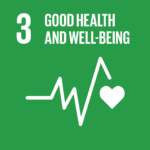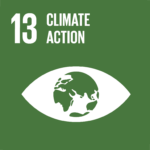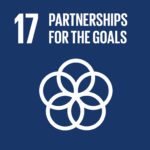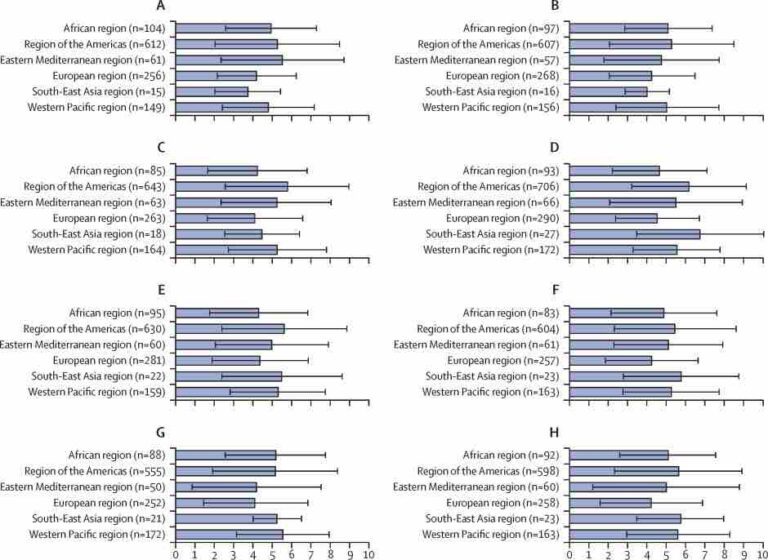A widening divide in climate and health education.Despite climate change being one of the most pressing public health threats of our time, the study found that only 70% of surveyed institutions offered climate and health education, with just 39% making it mandatory.
As the world faces escalating climate-related health crises, public health professionals remain underprepared to tackle the mounting risks. A global survey conducted by The Lancet Planetary Health, between November 2023 and March 2024, has revealed glaring disparities in climate and health education across public health institutions worldwide. Despite climate change being one of the most pressing public health threats of our time, the study found that only 70% of surveyed institutions offered climate and health education, with just 39% making it mandatory.
RELEVANT SUSTAINABLE GOALS



This first-of-its-kind assessment, covering 81 countries and 279 institutions, highlights a critical gap in training public health professionals—a shortfall that could leave millions vulnerable to heatwaves, air pollution, infectious disease outbreaks, and climate-induced displacement. The findings raise an urgent question: Is the world truly equipping its health workforce to respond to the realities of the climate crisis?
Who is Leading and Who is Falling Behind?
The survey, conducted across all WHO regions, found that Europe and the Americas had the highest levels of climate and health education integration:
- 80% of public health institutions in Europe included climate-related courses.
- 72% of institutions in the Western Pacific region and 71% in South-East Asia reported offering climate and health education.
- In Africa and the Eastern Mediterranean, where climate vulnerability is highest, fewer than 50% of institutions provided comprehensive training.
This regional divide is alarming, considering that developing nations in Africa, South Asia, and the Middle East are projected to face the greatest public health burdens from climate change. Countries already grappling with extreme heat, rising sea levels, and food insecurity could find themselves without the skilled workforce necessary to manage these threats.
Higher Education Falls Short on Climate Action
Among the 298 public health degree programs identified, climate and health education was most common in master’s degree programs (40%), while undergraduate and doctoral programs lagged behind. This suggests that while advanced students may gain exposure to climate-health topics, foundational education for future public health leaders remains insufficient.
Furthermore, only 57% of degree programs included climate and health content as a required part of their curriculum. This means that even in institutions that offer climate courses, students can graduate without any formal training on how climate change affects public health.
What’s Missing? From Theory to Practice
The study also found that most existing climate-related courses focus on theoretical knowledge rather than practical skills needed for climate adaptation and emergency response.
Prior research has highlighted major gaps in hands-on training, particularly in:
- Climate disaster preparedness
- Health system resilience against extreme weather events
- Mitigating climate-driven disease outbreaks
- Community health interventions for climate adaptation
Without stronger competency-based education, health professionals could struggle to apply climate science to real-world public health emergencies—from heatstroke epidemics to vector-borne disease outbreaks like malaria and dengue.

Implications for Asia and Developing Nations : The Urgent Call for Reform
For Asia, Africa, and other developing regions, these findings expose a major policy gap in climate resilience. While these areas face the highest climate-related health risks, they are also the least equipped to respond due to weak education systems and workforce shortages.
In Southeast Asia, India, and sub-Saharan Africa, where extreme heat, floods, and tropical diseases are worsening, integrating climate and health education into public health schools could be critical for reducing mortality and health system strain. Countries in these regions must prioritize workforce training, ensuring that future public health leaders are not only aware of climate risks but also trained to mitigate them.
The survey findings reinforce a growing consensus: climate and health education must be rapidly scaled up in public health curricula worldwide. Addressing these gaps requires a coordinated global effort, including:
- Mandatory integration of climate and health topics in all public health degree programs.
- Upskilling current health professionals through targeted training programs.
- Investments in faculty development and evidence-based curricula.
- Cross-border collaboration to share best practices in climate-health education.
As climate change reshapes global health landscapes, failing to prepare public health professionals today could mean millions of preventable deaths tomorrow. This report delivers a clear warning: if universities and governments do not act now, the world risks falling dangerously behind in protecting human health from climate change.



